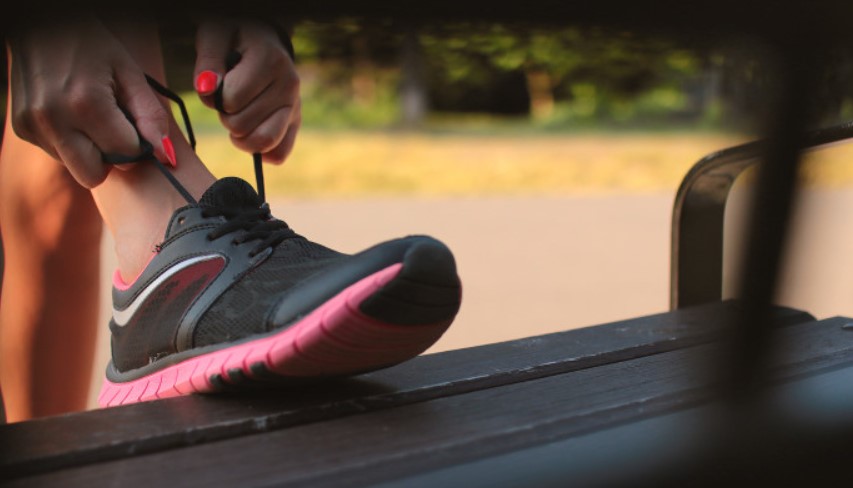Last Updated on October 5, 2023 by Alex PT
The choice between Nike and Brooks shoes depends on personal preference and needs. Nike offers diverse styles and is popular, while Brooks is known for its specialized running shoes. Both have loyal followings, and performance varies by model.
The table below is a comparison chart of Brooks and Nike:
| Parameters | Nike | Brooks |
| Outsole | Lightweight, carbon rubber | Thick, blown rubber |
| Midsole | DNA and BioMoGo midsoles | Lightweight ZoomX foam midsoles |
| Upper | Nike flyknit upper | Engineered mesh upper |
Overview Of The Brooks

For over a century now, Brooks has focused on designing and creating all sorts of running-related shoes, from footwear to rain boots. Starting in 1972, just before Frank Shorter won the Olympic Marathon, Brooks has been releasing popular running sneakers and bringing runners everywhere their first taste of modern comfort with their innovative technologies.
Brooks decided to focus solely on making running shoes that runners love and need instead of branching out into an assortment of footwear. Using a combination of their award-winning technology, analytics on what real runners like you have been looking for, and the insights from their loyal fan base, they made sure their new products were well-cushioned but responsive and comfortable. And most importantly, the shoes had a wide toe box for runners who could appreciate those features in their daily routines.
Overview Of Nike

Nike began in 1964 when Bill Bowerman was getting requests for cushioned running shoes from University of Oregon runners. So he decided to fashion some out of waffles, which got the ball rolling on the new business. Nike Air technology is named after the air pockets that Bowerman used in his shoe design. He partnered with Phil Knight to create Nike, and they released “Nike Cortez”, one of the first shoes with any kind of cushioning at all.
Nike, the maker of footwear and athletic apparel, stayed in the game by tapping into a specific niche that others overlooked. Nike has been an innovator not only within the realm of running shoes but also in branching out to clothing, devices, and accessories specifically designed with a runner’s every need topmost. Nike products are known for their superior technology and comfort as an added bonus. They’ve continued to be ahead of the curve when it comes to listening to not just what their runners want from a shoe but actually listening to what they have to say about all their products!
Nike sneakers are supposed to be the epitome of cool, right? There is one common problem – they don’t always fit! Shoes don’t seem to vary in size and neither do runners’ feet. As a result, Nike’s shoes vary greatly – everyone prefers something different. Nike makes the whole range – from snug and responsive to super cushy, from minimalist to maximalist. Take time to get fit properly because there are differences everywhere! For example, the Vapor 9.5 Men’s Running Shoe has a slim silhouette making it ideal for runners with narrow feet or high arches. The AF1 Sage Women’s Shoe is also narrower than average and will conform better to women who like to wear their sneakers tight-fitting.
Key Differences Between Nike and Brooks Shoes
| Aspect | Nike Shoes | Brooks Shoes |
|---|---|---|
| Brand Background | Founded in 1964, known for its wide sportswear range and collaborations. | Established in 1914, specializes in running shoes. |
| Running Focus | Offers a range of athletic shoes for various sports, including running. | Specializes in running shoes with a strong focus on performance. |
| Cushioning Technology | Utilizes various cushioning technologies like Air, React, and Zoom Air. | Employs cushioning systems like BioMoGo and DNA AMP, tailored for running. |
| Fit and Comfort | Known for comfortable, versatile fits suitable for everyday wear. | Emphasizes supportive and comfortable fits specifically designed for running. |
| Running Shoe Categories | Offers a variety of running shoe types, from casual running to racing. | Caters primarily to running categories like neutral, stability, and trail running. |
| Style and Aesthetics | Features trendy designs and collaborations, appealing to a wide audience. | Focuses on performance-oriented designs with a more understated aesthetic. |
| Price Range | Offers a wide price range, from budget-friendly to high-end options. | Generally priced competitively with options in various price brackets. |
| Innovation | Known for introducing cutting-edge technologies and materials. | Innovates in running-specific technologies, such as GuideRails for support. |
| Popularity | Has a massive global following and is often associated with fashion. | Well-regarded among runners and has a dedicated running community. |
Let’s look into some specific shoe details of both Nike and Brooks.

Upper
Brooks shoes feature several technological advances to help provide stability, support, and shock absorption for runners. One such advancement is the use of engineered mesh, which is an interwoven fabric that offers support and flexibility. Another tech used in Brooks shoes is called Fit Knit, which is a seamless design made of high-quality materials that contours well to your foot. Some models may also include 3D Fit Print, a lightweight material that provides even more support by locking your foot into place while allowing you to move freely.
Ghost GTX shoes are equipped with water-repelling GORE-TEX in the sole and outsole. They’ve also got 3D Ultralight cushioning foam that absorbs shock and helps prevent injury. The Brooks brand’s shoes feature fully breathable uppers so runners will stay comfortable and cool during their races. Their synthetic overlays are flexible, reducing the risk of blisters and rubbing. Their innersoles conform to runners’ feet for a custom fit that eliminates jamming or chafing.
The new Nike Flyknit material is used in the upper of the shoe and is designed with a knitted, sock-like fit which makes the shoes breathable, unlike other boots. Nike Flywire and Dynamic Fit technology are both incorporated into these elements of the shoe design (DRC), which provide additional support to the wearer’s foot by pulling around the ankle and midfoot areas. This is your “arch support” and kind of like how socks pull against your foot by means of tightening your laces!
Midsoles
Brooks shoes feature DNA and BioMoGo midsoles. The former is a unique EVA foam that adapts to the individual’s foot pressure and disperses force throughout the sole of your shoe. This type of midsole – or cushioning – is designed to give runners and walkers a healthier option in footwear, while upgrading their footsteps with bouncier and springier soles that feel as if they’ve been custom-made for them.
The evolution continues with our BioMoGo midsole technology. Embedded within this special cushion is a micro-organism that actually eats away at certain molecules within the material so that it can grow inside your shoe like a mini petri dish! Over time you’ll notice the foam molding to your exact shape without ever falling out of balance, and adjusting itself perfectly to your movement patterns whether you’re walking, running, or working out (as it’s all part of daily life!)
These shoes are lightweight and allow for a smooth transition from heel to toe like a sewing machine. They have sensors that react to the person wearing them, monitoring their running style, stride, and weight. The sensors then react by changing to align with the way you’re running. The sensors are made of copper wiring, which heats up before it reacts. Once the heat rises above 140 degrees F, which only takes 0.1 seconds, they activate the cushioning that’s needed in each step.
Nike midsoles are at the center of an exciting revolution. They are built around ZoomX foam, which is lightweight and springy. Zoom pods have been combined with Nike React technology in some shoes, which will give you a bouncy and responsive ride. Depending on the type of Nike shoe, you could even find a full-length Zoom bag, for extra spring.
However, in terms of innovation, it’s important to keep in mind that simply making a structure lighter does not make for a good improvement. Nike has introduced carbon fiber plates into their shoe’s midsole which improves running efficiency, especially among elite runners capable of speeds over 10 miles per hour. The plates have also raised questions about what a shoe should and should not be able to do. They have led the International Association of Athletics Federation (IAAF) to revise their regulations on shoes worn by runners during races but still insist that they must weigh at least 200 grams or 0.44 pounds.
Outsole
Brooks shoes feature outsoles that are thick, blown rubber with flex grooves in the forefoot. The flex grooves provide flexibility while keeping your foot moving naturally and providing a better toe-off. Brooks’s Podular technology is featured on some of their shoes, which offers even more flexibility by creating special pods where stress is typically most concentrated, reducing impact and stress on your joints.
In order to make the most out of your running experience and get the most out of your time spent on running, Brooks has created sections in their soles that are much firmer. These special sole-enhancers encourage a more responsive feel which helps you be less fatigued so that you can run longer and harder over the long-term. Some of the company’s shoes also feature a thick heel made from robust carbon accumulation, which makes it possible for them to take much more abuse than usual.
Nike outsoles come in a variety of choices depending on the type of movement and support required. Carbon rubber is commonly used since it’s lightweight and sturdy, but it can also be made using fiberglass if you want something a bit more flexible. The segmented grooves are placed along with flex grooves on the outsole so that the shoe will be able to mimic your foot’s natural range of motion, which is an important factor for optimal functionality in any athletic shoe.
The outsole of the shoe needs to be rigid and meant for rigorous use, but it needs to come in more than one way. Some are designed with a harder rubber compound, but others will have softer and spongier materials which cushions the impact that can be felt through the foot during everyday activities.
Which Is Better, Nike or Brooks Running Shoes?
The choice between Nike and Brooks for running shoes can be a challenging one as both brands offer exceptional styles, performance, and comfort. In critically comparing these two, several factors are worth considering such as comfort, durability, price, and design.
1. Comfort
- Nike: Known for their plush cushioning and adaptive fit, Nike running shoes guarantee a snug, comfortable feel. Innovative features like the Nike React foam provide a smooth, responsive ride.
- Brooks: Brooks focuses heavily on comfort, committed to delivering running shoes that boast of optimum cushioning and support. Their BioMoGo DNA midsole adapts to runners’ strides for custom cushioning.
2. Durability
- Nike: Nike ensures longevity in their products with high-quality materials and robust construction. However, the lifespan might lessen for runners with daily high-mileage routines.
- Brooks: Brooks running shoes are reputed for their durability. Thanks to sturdy construction and premium materials, these shoes often withstand the test of time, making them ideal for long-distance runners.
| Nike | Brooks | |
|---|---|---|
| Durability | High-quality materials but mortal for daily high-mileage runners | Durable, ideal for long-distance runners |
3. Price
- Nike: While offering a range of options, Nike shoes can be on the higher end of the price spectrum, especially the models featuring the latest proprietary technologies.
- Brooks: Generally, Brooks shoes are more moderately priced. They provide a good balance of cost and quality, making them an excellent value for money.
4. Design
- Nike: Nike shoes offer style and aesthetics, boasting a variety of designs and colors that appeal to everyone’s taste. Their shoes often double up as lifestyle shoes.
- Brooks: While Brooks places more emphasis on functionality over fashion, their range of styles has significantly improved over the years, offering runners both performance and style.
5. Technology
- Nike: Nike continuously innovates, with technologies such as FlyKnit for enhanced breathability and Zoom Air units for responsive cushioning, which propels the foot forward.
- Brooks: Brooks’ proprietary technologies include GuideRails for holistic support and DNA AMP midsole technology for supreme cushioning and responsiveness.
Conclusion
In the Nike vs. Brooks running shoes debate, the choice predominantly depends on individual preferences about comfort, durability, price, design, and technology. While Brooks offers highly specialized running shoes with a balance of price and robustness, Nike delivers a blend of fashion, comfort, and leading-edge technology – albeit at a slightly higher price point. Therefore, the preferences come down to the individual runner and their specific needs.
References:
https://marathonhandbook.com/nike-vs-brooks/
https://www.runtothefinish.com/nike-vs-brooks-running-shoes/

Hi! I’m Alex PT. I hold a Bachelor’s degree in Sports Management from Indiana University and have over seven years of valuable experience working in a Sports Event Management Company. I founded SportBlurb with the passion for bringing you the latest, most insightful, and engaging content in the world of sports. So, whether you’re a die-hard fan or want to stay informed, I’ve got you covered!

